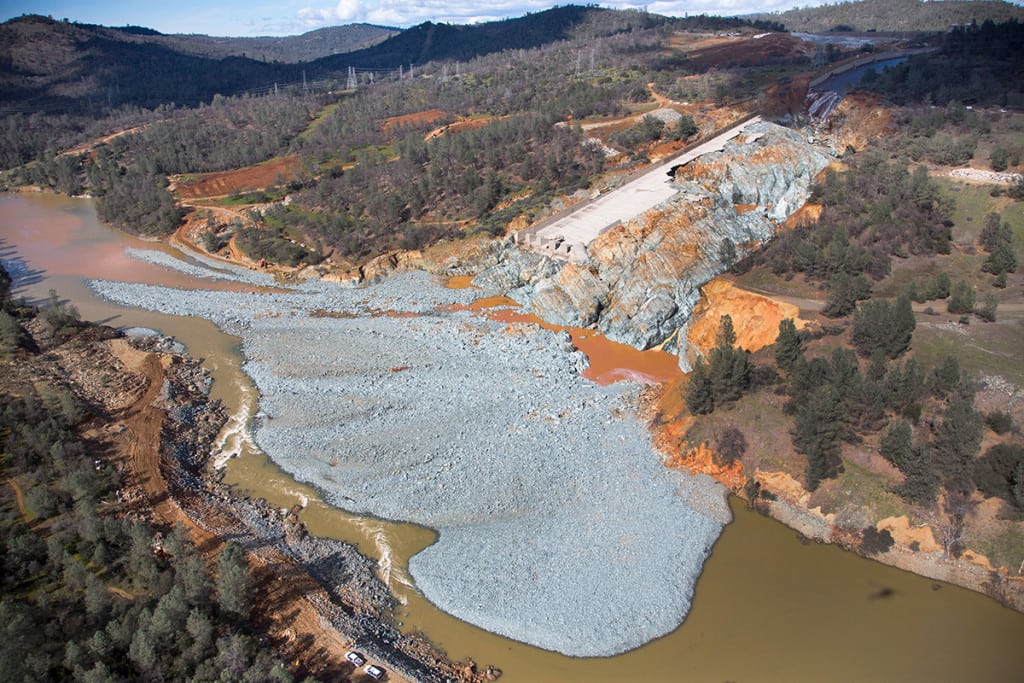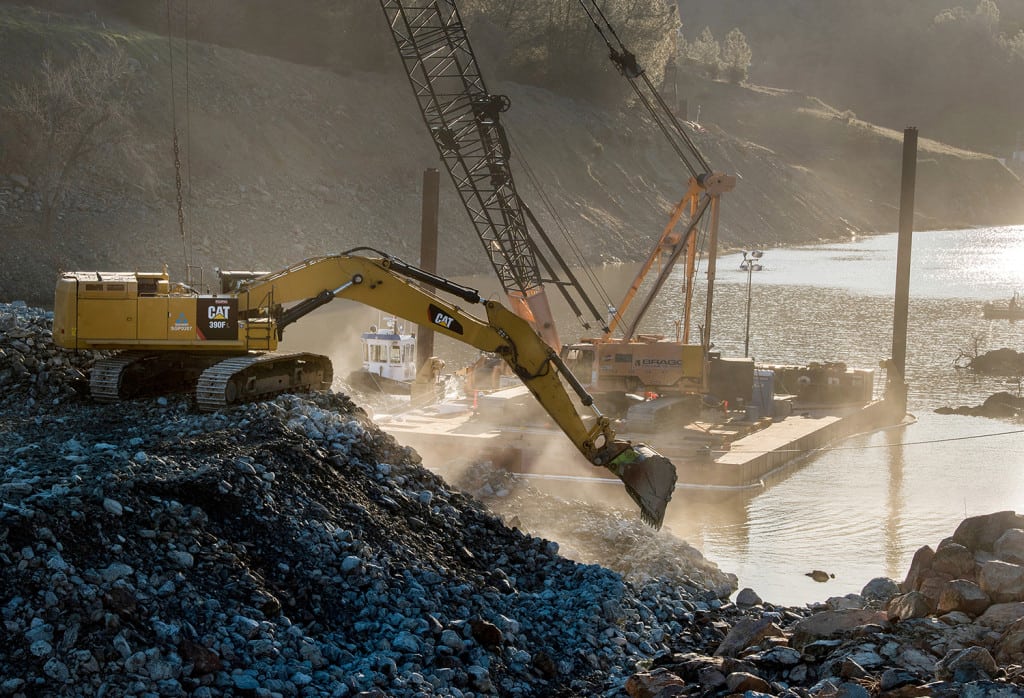Oroville Dam Power Plant May Reopen This Week
The Edward Hyatt hydroelectric plant at the damaged Oroville Dam in northern California, shut down earlier this month after its spillway nearly collapsed, may reopen soon, officials with the California Department of Water Resources (DWR) said on March 1.
The plant was forced to shut down after severe erosion from the dam’s spillway deposited large amounts of concrete, rock, and debris in the channel, causing water levels to rise to the point that the plant’s turbines were unable to operate (Figure 1).

Engineers on February 27 stopped water flow over the spillway in order to clear the channel (Figure 2). Work is currently ongoing 24 hours a day to remove the debris.

“We’ve been monitoring this spillway closely since February 7, and we knew there was significant damage before we went to zero flows,” said DWR Acting Director Bill Croyle. “It’s clear we have a lot of work ahead of us. Work already is underway to repair or replace the damaged spillway so that we are ready for next winter.”
The DWR said in a statement March 1 that, “to prepare Hyatt Powerplant for operation, reconfiguration of the powerlines connecting the plant to the grid began yesterday. Work continues on the area below the emergency spillway, access roads, and various eroded areas created by emergency spillway runoff.”
The spillway suffered severe damage after a sinkhole opened up underneath the concrete liner on February 7, causing large portions of the hillside to erode away from the torrents of water coming over. The Oroville Reservoir briefly exceeded 100% capacity on February 12 after heavy rains a week earlier, sending water over the dam’s emergency spillway for the first time in its 50-year history. That emergency spillway suffered damage as well, though fears that it might collapse proved unfounded.
Closing the plant and spillway has caused water levels in the reservoir to begin rising again, though they are currently well below dangerous levels reached earlier. Water is currently at about 843 feet, 58 feet below the top of the dam. Officials said they will reopen the spillway should water reach 860 feet, about 41 feet below the top.
The loss of the 819-MW power plant has crimped power supplies in the area, forcing additional generation from the region’s natural gas plants. Officials are still trying to determine why the spillway failed, as the sinkhole opened up during flows that were well below its design capacity.
—Thomas W. Overton, JD is a POWER associate editor (@thomas_overton, @POWERmagazine).